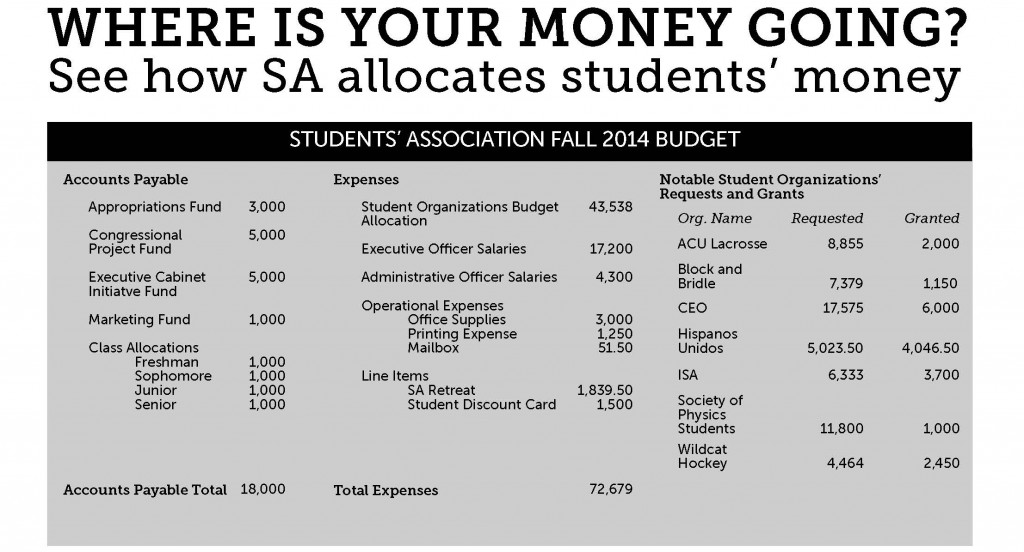On Wednesday, the Students’ Association presented its proposal for the fall budget and passed it after making a few amendments. This year SA received $90,000 total from the university.
Included in every student’s tuition is a fee that goes to SA. The idea is that, in turn, this money will be spent in ways that benefit students through SA.
With this fall’s budget allocating less than half of its funds to student organizations, we think we ought to share exactly where all the money goes. The Editorial Board does not think students aren’t benefitting from the other $46,462 that wasn’t allocated to student organizations, but we do think we should all pay attention to how it is being spent.
Last year, each class was allocated $500 for their class officers to spend on class events. There was also an additional $1,000 designated for class officer requests, meaning each class could obtain an extra $250, leveling out at $750 per class. This year SA cut out the shared $1,000 pot and raised the class allocations by $500. Andrew Tate, SA treasurer, said they would like to put on better events out of SA.
“Raising the class budget puts more pressure on officers to put on a good event,” Tate said. “Lack of resources is no longer an excuse.”
While we hope that plan works and that we get $4,000 worth of good events, it hasn’t been the case in the past. What we’ve seen happen before is class officers waiting until the end of the semester and realizing they have cash that needs to be spent, so they put together a random end-of-the-year party or Slip ‘N Slide event that few people attend.
Here’s to hoping class officers step up their event-planning game. If it falls through again, we will advocate that the spring budget dissolve class funds altogether and give it to student organizations who have been putting on some of the same successful events every year.
Another addition to the budget this year is a designated marketing fund of $1,000. Tate said they are hoping to increase the brand image of SA and gave Rudy Garza, the chief communications officer, $1,000 to help do that. While we would prefer that SA was aspiring to be more transparent than more marketable, we are still looking forward to seeing what Garza produces with the money and hope that maybe he can achieve both.
Compared to last semester’s budget, $2,000 more was added to the congressional project fund and $3,000 was added to the cabinet initiative fund, with both accounts now totaling $5,000 each. Not only does this mean $5,000 less given to student organizations than last semester, but it means there is $5,000 more that we don’t exactly know how is being spent. The student organizations are required to break down their budgets line by line accounting for every t-shirt, tablecloth and doughnut they plan to buy during the semester. We think that congress and the executive cabinet should be held to the same standard. If they are going to take money away from student organizations, we should be informed of the other ways students will benefit from it.
About $17,000 is designated for the executive officer salaries. It’s divided between the president, vice president, treasurer and executive administrator. A little more than $4,000 is designated for the administrative officer salaries. It’s divided between the chief communications officer and the chief financial officer. These positions require many hours of hard and often thankless work, but we’re calling attention to it so that students are aware of who they are paying to represent them.
The SA officers have lots of great plans for this semester and the budget reflects that. We are looking forward to seeing what benefits students are able to reap from it.

